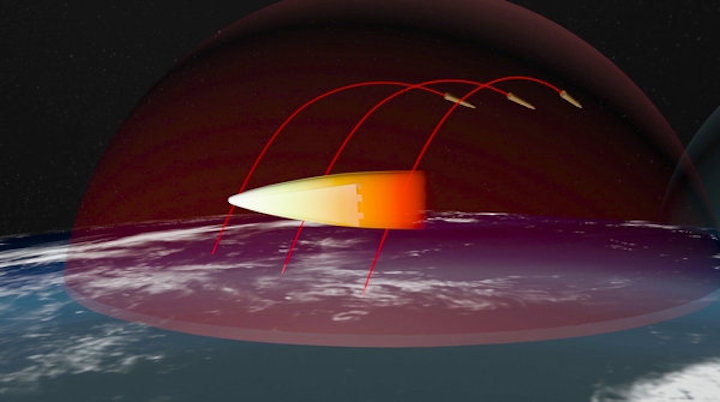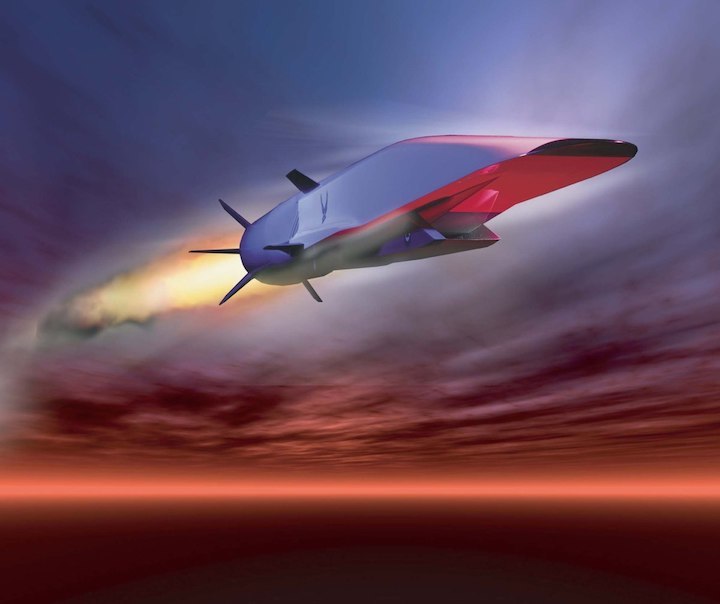WASHINGTON — Hours after Russian President Vladimir Putin claimed his military has successfully tested a hypersonic cruise missile, the head of the Pentagon’s high-tech workshop says the U.S. is on track for a series of hypersonic prototype tests in the coming years, thanks to a big spending increase in the fiscal year 2019 budget request.
Even with that funding boost, Steven Walker, the director of the Pentagon’s DARPA, warned that it is time for America to come to grips with the fact that a national push is needed if the U.S. is to keep pace with competitors in the hypersonic realm.
Hypersonic flight — going Mach 5, or five times the speed of sound — has been a dream of military planners for years, for obvious reasons. Any weapon system able to move that quickly would be able to avoid conventional missile and air defenses, and would have benefits both for manned or unmanned systems.
But while the U.S. has experimented on the technology for years, if Putin is to be believed, such a weapon is now part of its arsenal.
As part of his annual state of the union speech, Putin formally unveiled the Kinzhal hypersonic cruise missile, a weapon that he claimed is now undergoing final trials.
“It is the only one of its kind in the world. Its tests have been successfully completed, and, moreover, on Dec. 1 of last year, these systems began their trial service at the airfields of the Southern Military District,” Putin said, according to an English transcript posted by the Russian government.
“The missile flying at a hypersonic speed, 10 times faster than the speed of sound, can also maneuver at all phases of its flight trajectory, which also allows it to overcome all existing and, I think, prospective anti-aircraft and anti-missile defense systems, delivering nuclear and conventional warheads in a range of over 2,000 kilometers,” Putin added.
Initial reaction from analysts to Putin’s statement was a mix of concern and skepticism, but it underlines a fear that has grown inside the Pentagon over the last few years – that Russia and China are poised to leapfrog the U.S. in a technology that could fundamentally hold the American military, and public, at risk.
But if the U.S. is not the sole leader in this technology, Gen. Paul Selva, vice-chairman of the joint chiefs of staff, believes the U.S. isn’t quite yet doomed.
“We have lost our technical advantage in hypersonics,” Selva said Jan. 30 at an event hosted by the Defense Writers’ Group. “We haven’t lost the hypersonics fight.”
Whereas both those nations threw a ton of money at developing a specific capability, the U.S. has invested to “come up with a family of hypersonic systems that work without necessarily trying to close all the technology pieces at the front end,” Selva said.

DARPA’s Hypersonic Family
In other words, the U.S. will get the capability, but it’s going to come through a series of individual programs rather than creating a singular, perfect system right away. Which is where DARPA comes in.
While various offices around the Pentagon, including in the Air Force and Navy, are looking at hypersonics capability, DARPA is the hub for the research. And that research is coming around, Walker said during a Defense Writers’ Group event Thursday.
“We’re going to start flying these systems in 2019, you’ll see lots of flight tests, and we’re excited that these will be systems that will be very capable that we can use from standoff” range, Walker said. “These are not going to be just flying propulsion concepts through the air.”
To get there, however, the agency needs funding. The DARPA head told reporters that last spring, he and a team went over to the Pentagon to hold a frank conversation with Bob Work, then-deputy secretary of defense, about the global state of hypersonic weapons.
The agency “really tried to convince the department that we need a national initiative in this area,” Walker explained. “We did push for a very comprehensive initiative in the budget process this fall, we did receive a budget increase at DARPA and in some of the services to do more in hypersonics. I don’t think we got everything we wanted, but it was a good first step.”
DARPA’s funding lines for hypersonic research have grown significantly in the last three budget requests. In FY17, Congress appropriated $85.5 million for hypersonics. That went up to $108.6 million in the FY18 request, a 27 percent increase. And for the recently released FY19 request, the figure shoots up to $256.7 million — a whopping 136 percent increase, but still a fairly low figure by Pentagon standards.
Among the programs being pursued by DARPA in FY19 are the Hypersonic Air-breathing Weapon Concept (HAWC) at $14.3 million and Tactical Boost Glide (TBG) program at $139.4 million, both as a partnership with the Air Force. The HAWC should be up and flying about through 2019, while the TBG program is aiming for an operational prototype in the 2022-2023 range, according to Walker.
The agency is also working with the Army on a $50 million Operational Fires demonstration program, looking to see how ground-launched hypersonic systems could work.
Meanwhile, DARPA got $53 million for the Advanced Full Range Engine program, a cooperation with NASA to create a hybrid engine that combines a traditional off-the-shelf turbine engine capable of supersonic speed with a dual-mode ramjet to transition to hypersonic flight. The expectation is there will be ground tests of the engine in 2019 or 2020, in an existing NASA test facility, but when a flight test might happen is unclear.
That program is particularly important, because if it proves out, it would provide a reusable hypersonic capability — which opens up the potential for manned hypersonic flight in the future. But whether that is an avenue worth pursuing whole heartedly is still up for debate, at least according to Selva.
“A manned hypersonic capability out in the future is still something that is a question of, can you scale hypersonics, small, highly maneuverable, high G, sturdy machines as something you’d put a human in?“
“I’m just not sure that that one would invest the money to make that transition,” Selva continued. “When you can make weapons hypersonic, it’s probably not a requirement to make platforms hypersonic. That’s the sort of trade space we’re in.”
Quelle: Defense News

